It looks like your yard is getting a little worn down. A clean edge can really make a difference. So why not give your yard the frame it needs with some great ideas for fence edges? It’s not enough to just make your green area look nice; you want to improve the overall vibe of your outdoor hangout.This guide gives you 40 clever fence edging ideas that will make any outdoor place look great. Have a big garden or a small, cozy patch? These ideas will make your green space look nicer and more organized. Let’s make your garden look cool!
Brick Edging
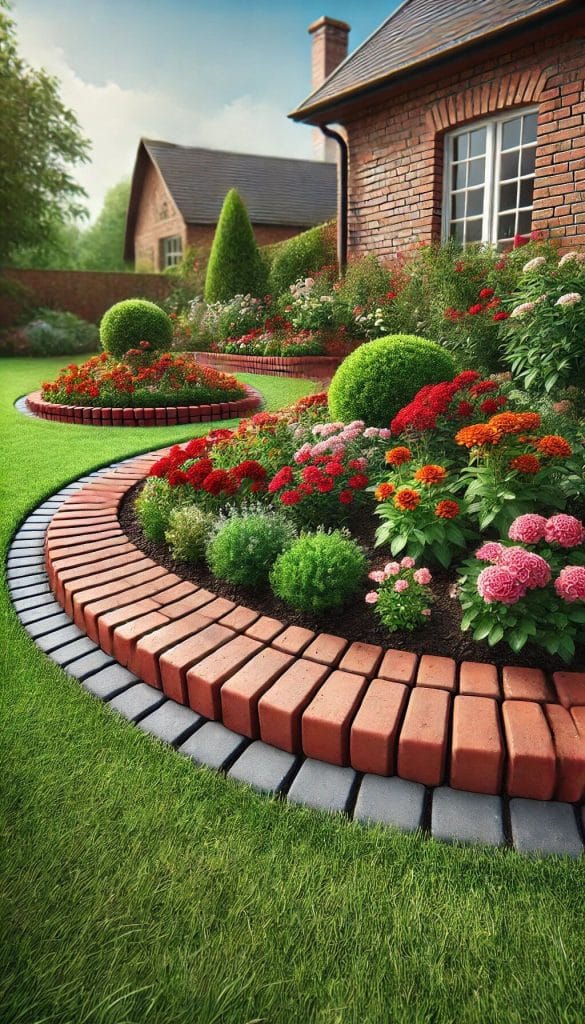
There’s a good reason why bricks might come to mind when you think of a strong fence edge. They give your yard a basic look that won’t go out of style with the next big thing. Bricks last a long time.
They’re great for cutting that lasts because they can handle bad weather like pros. Pick bricks that go with the style of your yard. The old-fashioned look of red bricks is matched by the more current look of gray bricks. Now, it’s mostly easy to take care of brick edges. They’re fine as long as you keep them clean and brush off the dirt every so often.
Stone Edging
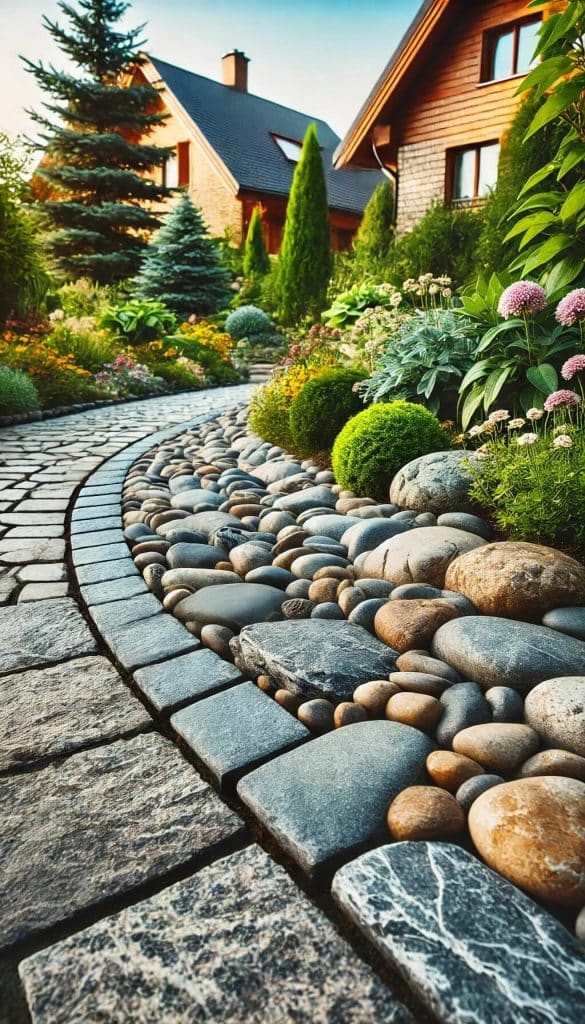
Stones are like the wild card of yard edging. You could use anything from smooth river rocks to sharply cut basalt. Each would give your garden edges a different look. Stone edging is pretty easy to put in place. Make a hole and lay down your stones. Make sure they fit well and won’t move. That being said, stones can make your yard look cooler, but they can be hard to move and cost a lot. And that’s it! Stone edging could be your thing if you don’t mind doing some work and want a more natural look.
Wooden Edging
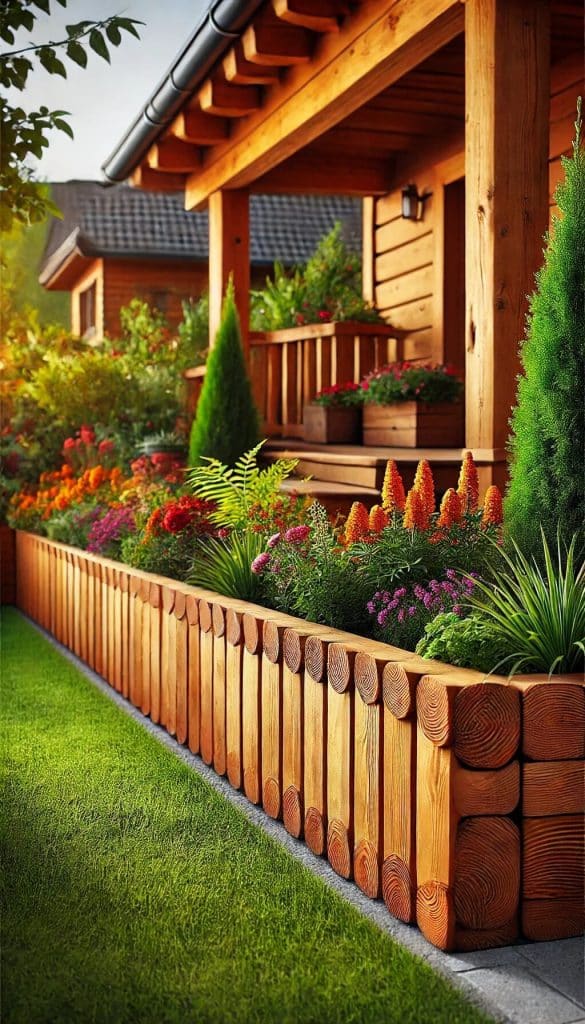
The natural look of wood around the edges of your yard makes it feel like a warm room outside. Edgers made of wood that can handle being outside, like cedar or oak, look best. These woods are not only beautiful, but they also don’t let bugs or rot grow in them. It’s easy to put them in. Put your wooden pieces in a row and hammer them into the ground. Voilà, you have instant garden charm. But wood does need a little more care. Putting a wood preserver on it once a year helps it look new and protects it from weather damage.
Metal Edging
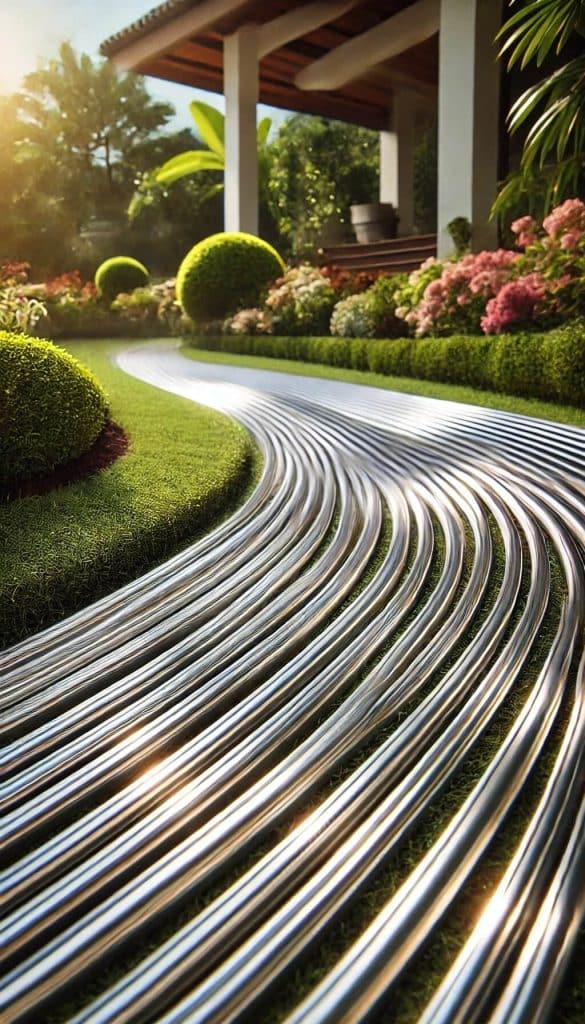
Metal edges? It really is as cool as it sounds. It’s your choice between iron, which looks great when it rusts, and aluminum, which stays shiny and doesn’t rust. Metal strips are great for making curved flower paths because they are thin and easy to bend. They fit right into the ground without any problems once they’re there. If you choose iron, just keep an eye out for rust spots and scrub them every so often. Metal edging looks good, lasts a long time, and doesn’t need much care, so it’s a good choice for a simple garden border that still looks good.
Concrete Edging
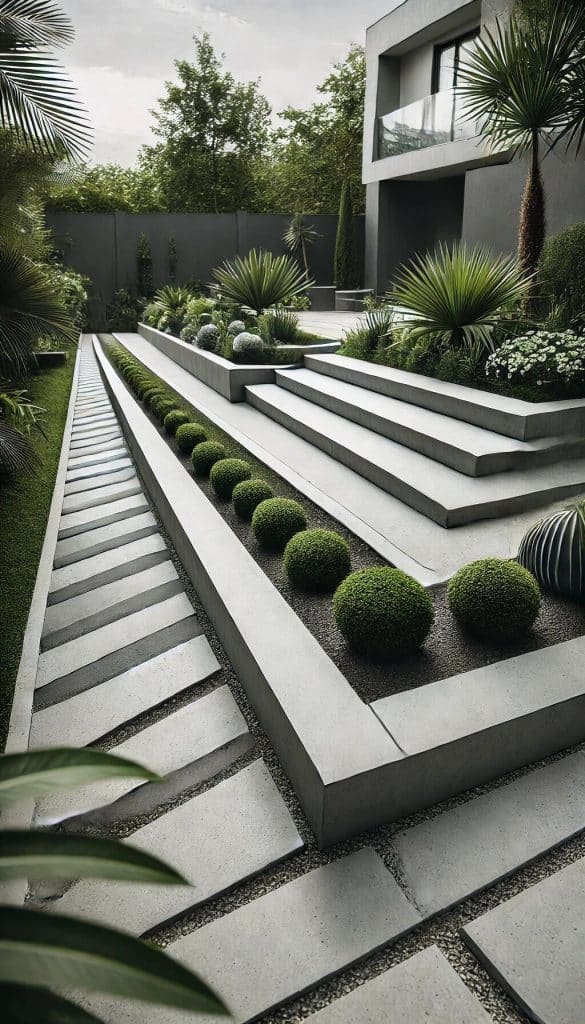
Who says paths are the only place to use concrete? This powerful material is taking over yard edging because it can be used in so many ways. You can color it, shape it, and even give it different textures to match the style of your outdoor decor. It’s not as hard as you might think to roll up your sleeves and get your hands dirty with concrete. You can bend it into any shape to fit around your flower beds, or you can snap it into straight lines for a new, clean look.
Composite Edging
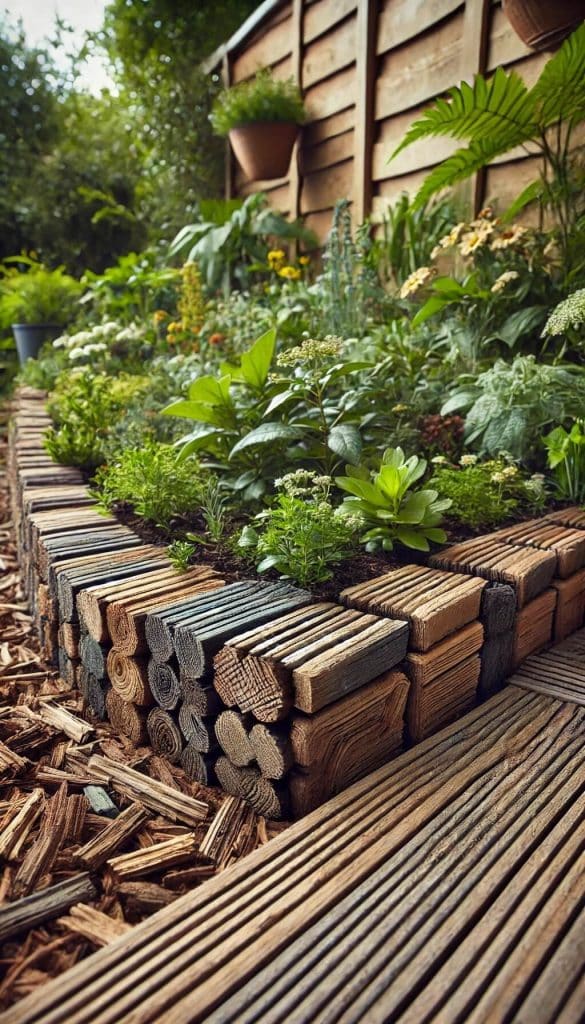
Let us now talk about composite materials, which are the new kid on the block. Picture this as a mix of used plastics and wood fibers. It looks like wood but is as tough as plastic. If you want to do something good for the environment, use wood edging. It gets rid of things that would have gone to the dump otherwise.
Glass Edging
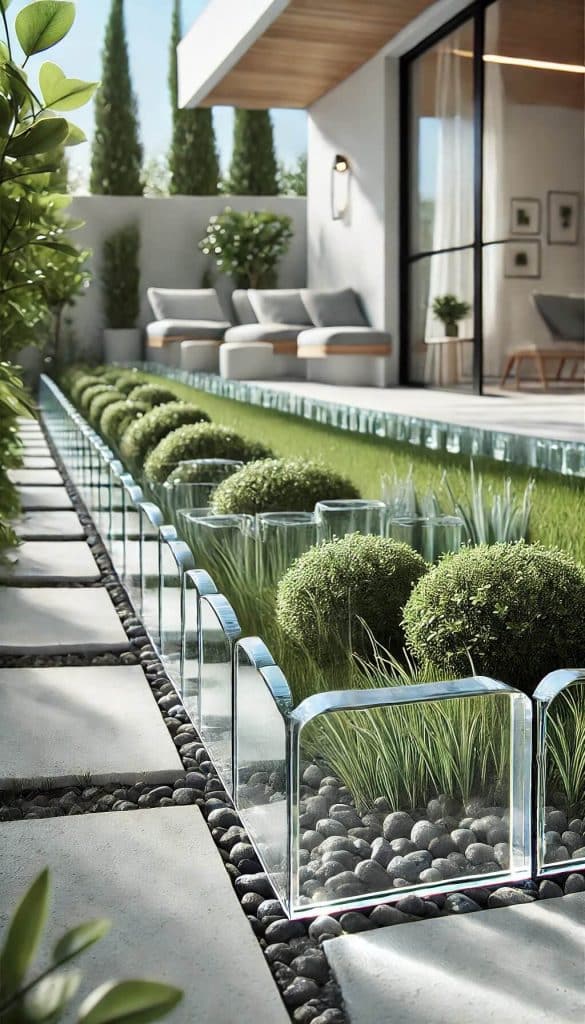
Want to do something that will make your neighbors look twice? Glass edge is your strong suit. Smooth and stylish, it catches light in beautiful ways that can turn a simple yard into a work of art. Wait, it’s not just about looks. Be careful when you touch glass. Make sure those edges are smooth so you can touch them. Glass installation takes some skill, but a quick lesson can teach you how to do it. What about after it’s set up? It is all about making people go “wow.” Just keep those shiny parts clean, and people will keep telling you nice things about them.
Bamboo Edging
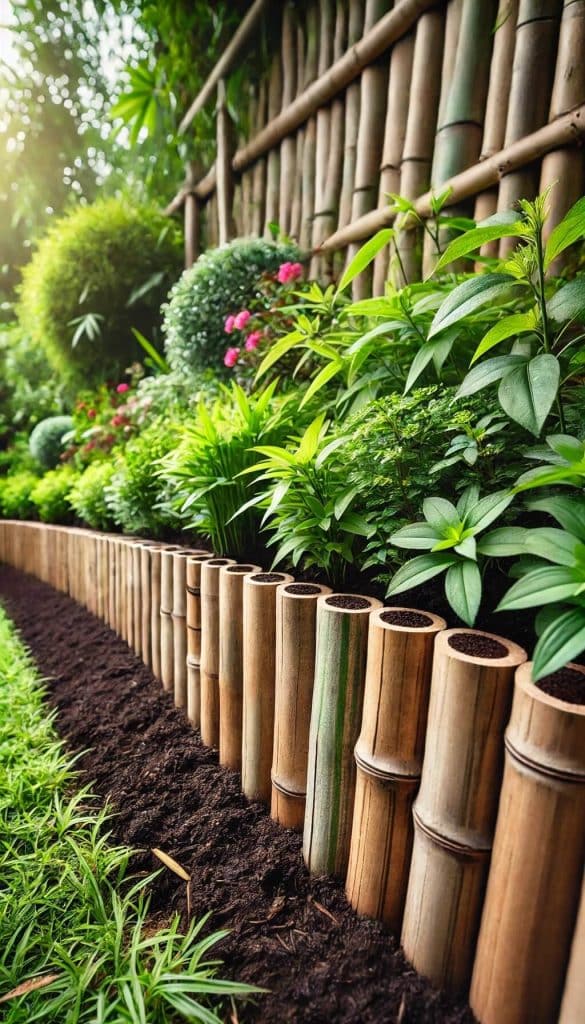
If you care about the environment and want to keep your yard green, bamboo edging is a great choice. This eco-friendly hero heals itself quickly, which makes it a great choice for people who want to leave less of an impact on the world. Planting stakes next to each other along the edge of your yard is all it takes to set up bamboo edging. When you put them down in the ground, you have a barrier that looks natural and goes with almost any outdoor setting.This doesn’t need much upkeep—just a quick clean to keep germs away and a look for splinters. You should talk about how long bamboo lasts. If you take good care of it, it can keep your yard lines straight for years.
Log Roll Edging
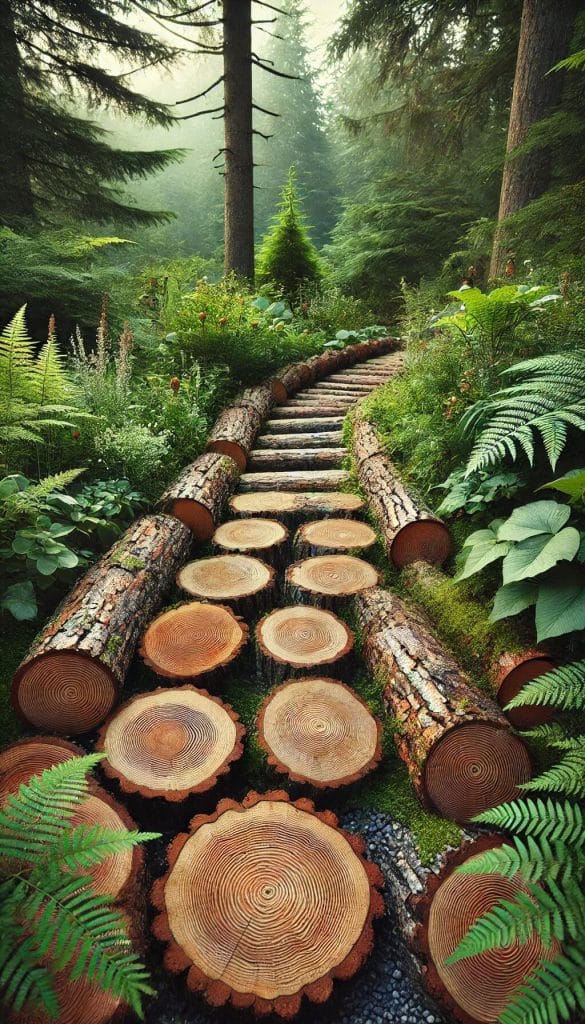
Like the look of old and worn things? You might really like log roll shaping. In this style, different kinds of logs are used. Cedar and oak are common choices because they don’t naturally rot. Each log has its own grains and textures, which adds to the charm. To set them up, you need to dig a small trench, lay the logs down, and secure them with stakes. Simple, but it has a big impact, making any garden edge stand out and make you feel like you’re in the middle of a forest retreat.
Living Plant Edging
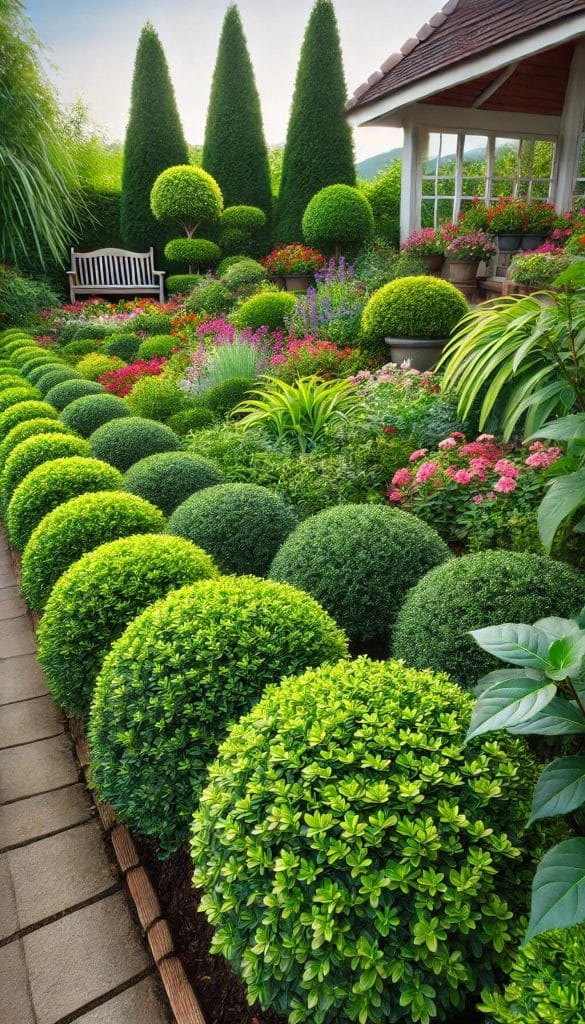
Why not let the edge of your yard get wild? It’s not only nice to use bushes or shrubs as natural edges; it’s also useful. If you want a living fence that looks good all year, choose low-growing bushes like boxwood or flowering perennials. The first thing you’ll have to do is plant and shape your green barrier to fit your area. For proper care, you should trim your plants regularly to keep them neat and feed them to keep them happy and healthy. The prize is a border that comes to life and gets stronger and more beautiful with each season.
Recycled Material Edging
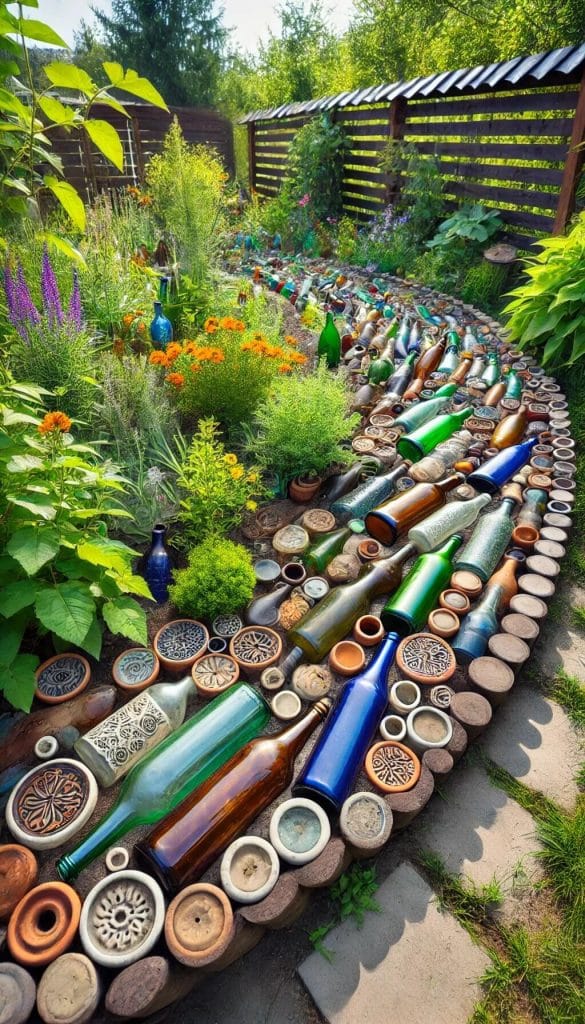
You don’t have to use bins to recycle. It’s also good for edges! People with a lot of creativity are making new cutting materials out of old bottles, broken ceramics, and even old tires. With their unique stories, each piece can turn a plain yard edge into a place where people want to talk. It’s great that this style is good for the environment and easy to change to fit your needs. Putting together your recycled edge can be a fun project to do over the weekend. You can try different designs until you find the perfect unique border that fits your style. To keep everyone safe, make sure that each piece is tucked into the ground.
Mosaic Tile Edging
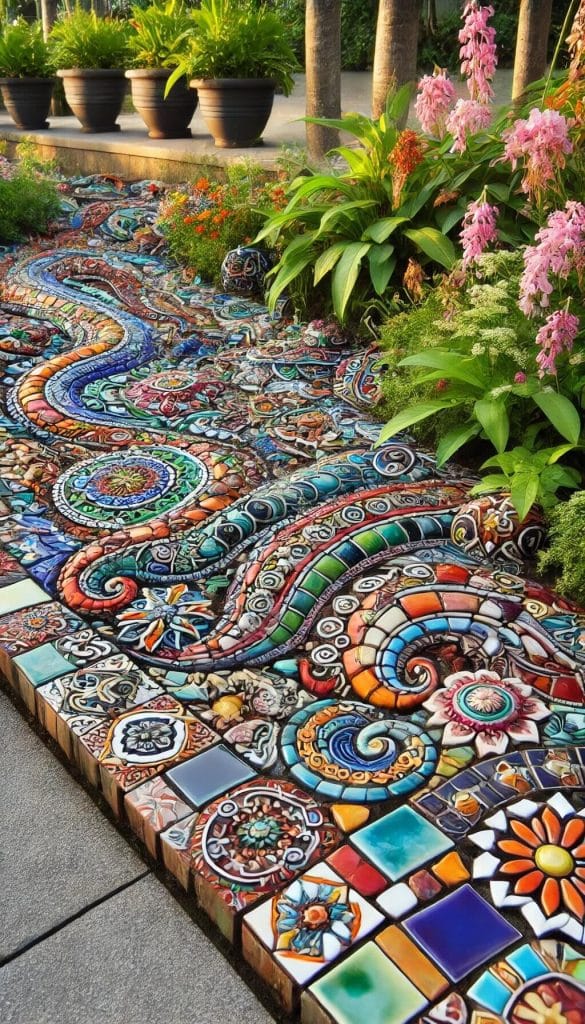
With mosaic tile edging, the edges of your yard become a blank canvas where you can show off your art. If you mix and match colors and materials, you can make anything from simple designs to complex landscapes. To begin, you will need ceramic, glass, or stone tiles, as well as outdoor-safe glue and grout. To place tiles, you have to make sure they stick by putting them down on a firm base like concrete or packed sand.
Pebble and Gravel Edging
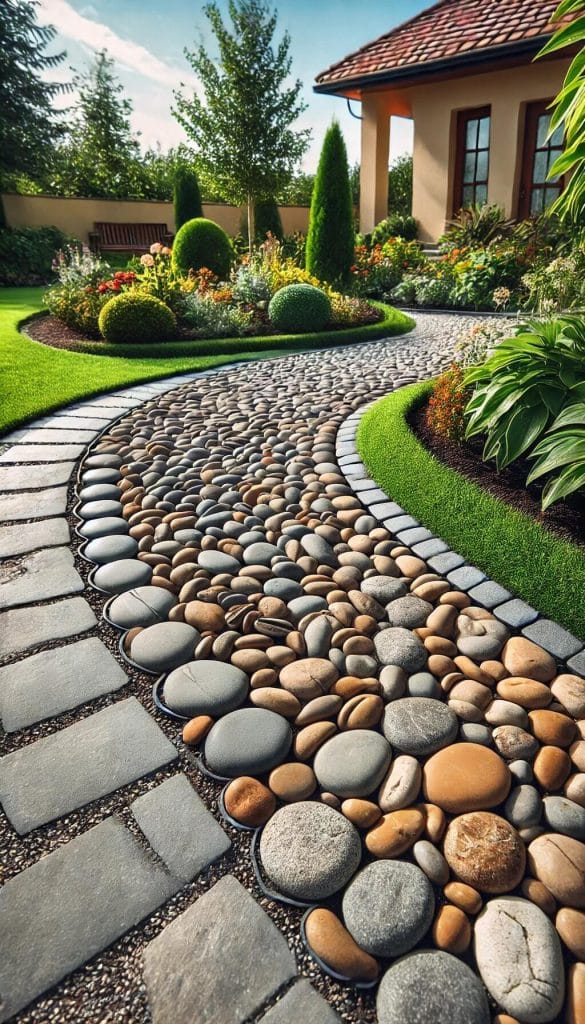
Edges made of pebbles and rocks are very flexible and have a natural look. From smooth river rocks to rough gravel, you can pick from a wide range of colors and sizes.
This kind of yard edging is very adaptable and can be used for both straight and curved lines. To keep weeds out, put down a barrier like landscape cloth. Then, spread out your pebbles or gravel and use edging stones or metal edging to keep them in place. It doesn’t need much upkeep; just rake the stones back into place every so often.
Terracotta Edging
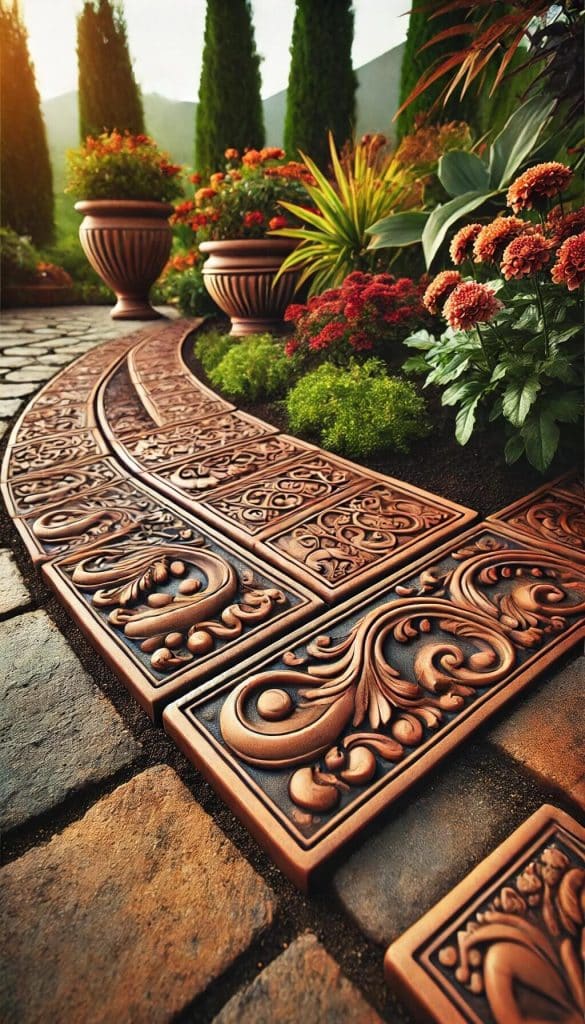
Terracotta edging has a classic and pretty look that makes you think of a country or Mediterranean garden. The rich, earthy color of these pots made from clay adds warmth, and they can be used as simple edges or as tiles with designs for decoration. To install the terracotta, you have to dig a small trench and place the pieces firmly in it, maybe using mortar to make them even more stable. Terracotta is a good choice because it lasts a long time and develops a beautiful color over time as it ages. Cleaning it often and finishing it every so often will help keep its look and make it last longer.
Woven Willow Edging
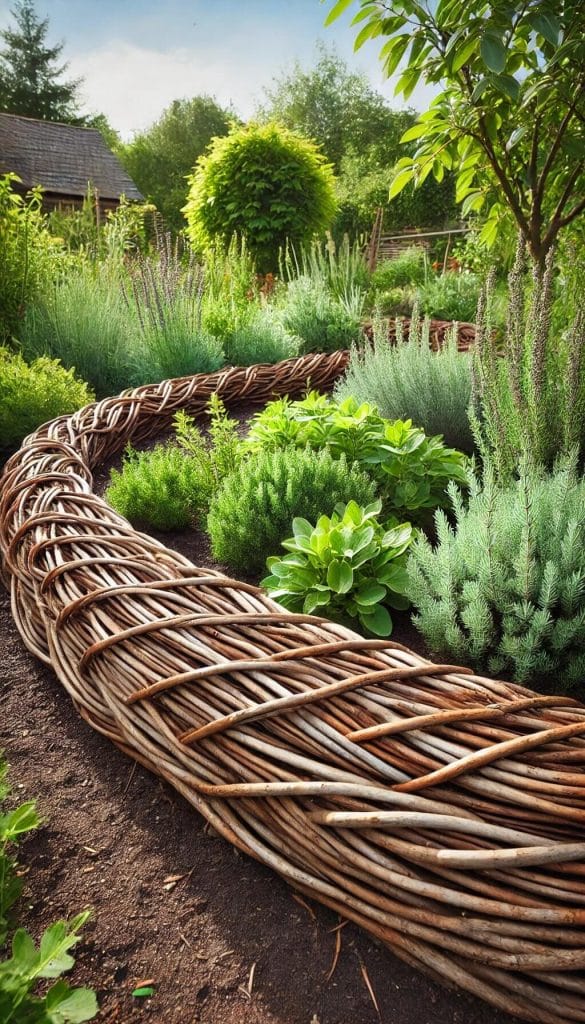
Woven willow edging is a great choice for people who like things to look more natural and old-fashioned. Willow branches are woven together in this style to make a continuous, bendable border that can fit any garden plan. Weaving and installing willow edging is almost like an art form; it takes a lot of skill and care.
Edging with Built-in Lighting
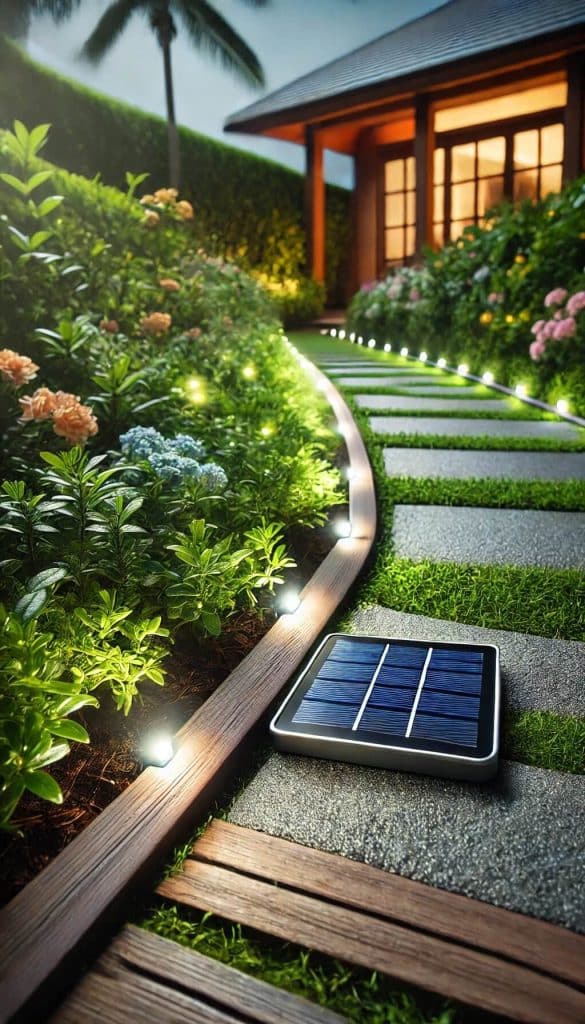
Edging with built-in lighting combines function and style, turning your yard into a beautiful scene at night. You can choose from solar, LED, or low-voltage lights, and each one will fit your wants and tastes. Installation is easy because most systems are made for do-it-yourselfers and have plug-and-play parts.
Raised Bed Edging
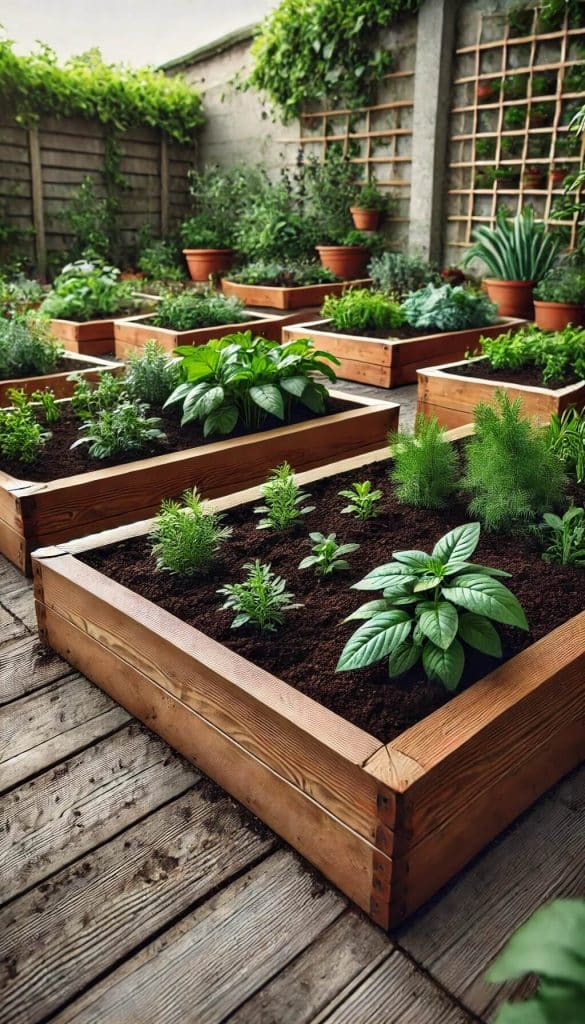
Raised bed edging keeps your garden neat and raises your growing area so it’s easier to get to and gives you better control over the soil. Wood, stone, and even long-lasting composites are popular building materials. Which one you choose depends on your style and budget. Setting up can be done over the course of a weekend. You will need to frame out the bed, fill it with dirt, and make sure it drains well. This method not only makes gardening easier on the body by cutting down on stooping and bending, but it also helps plants stay healthy by making it easier for water to drain and roots to spread.


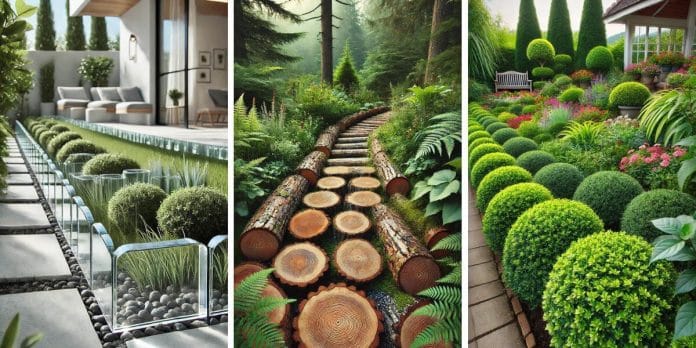
0 Comments